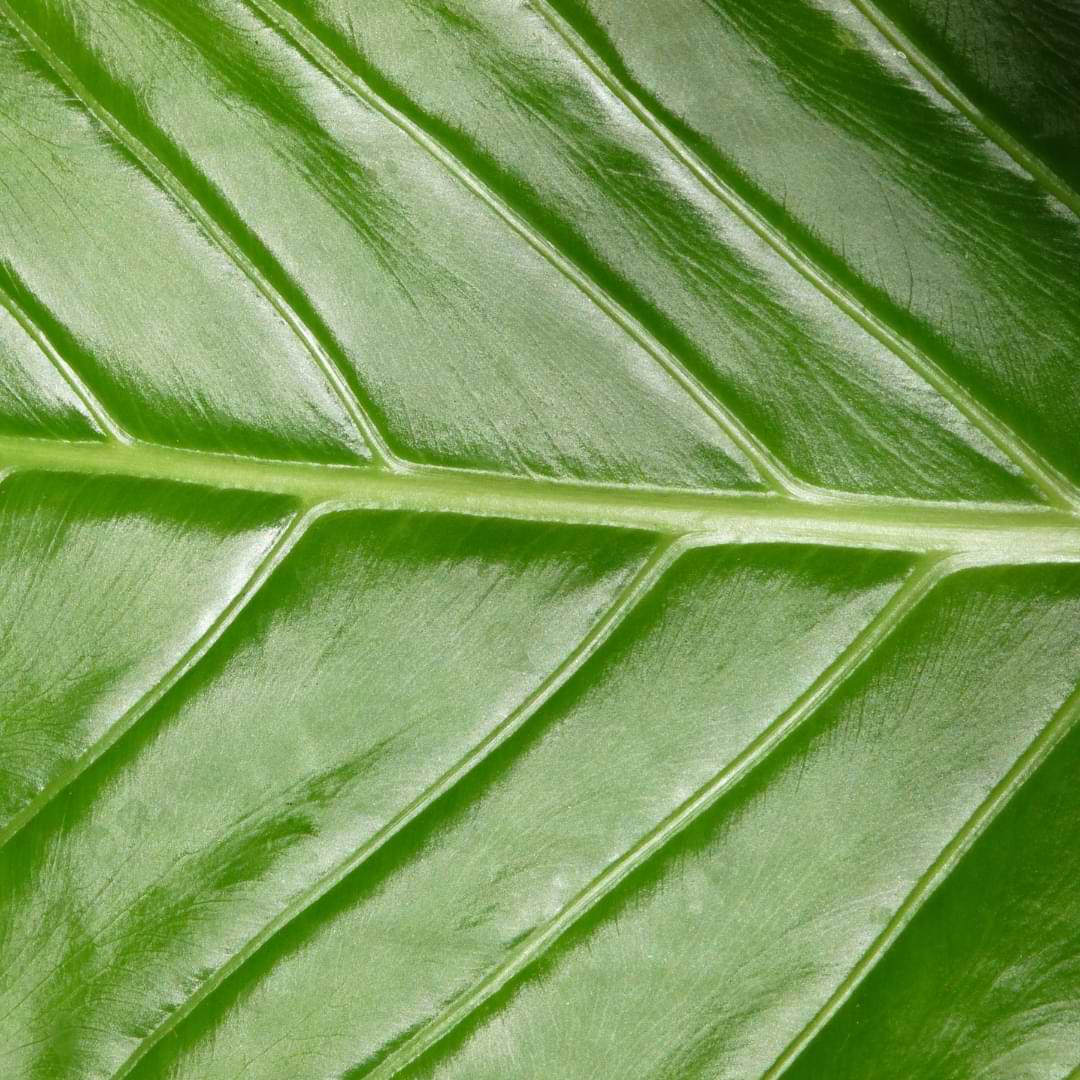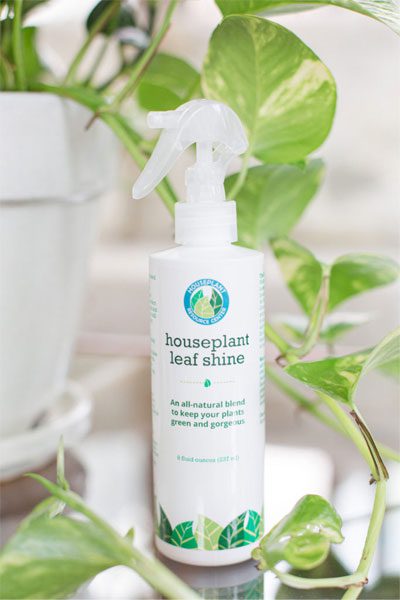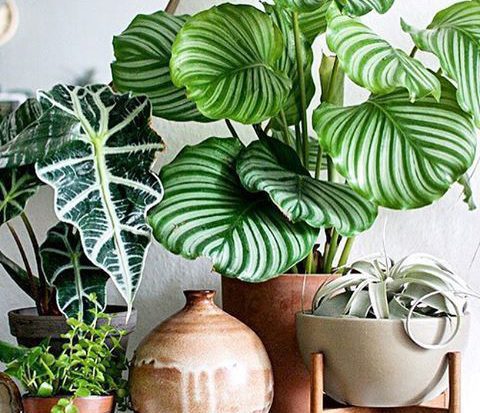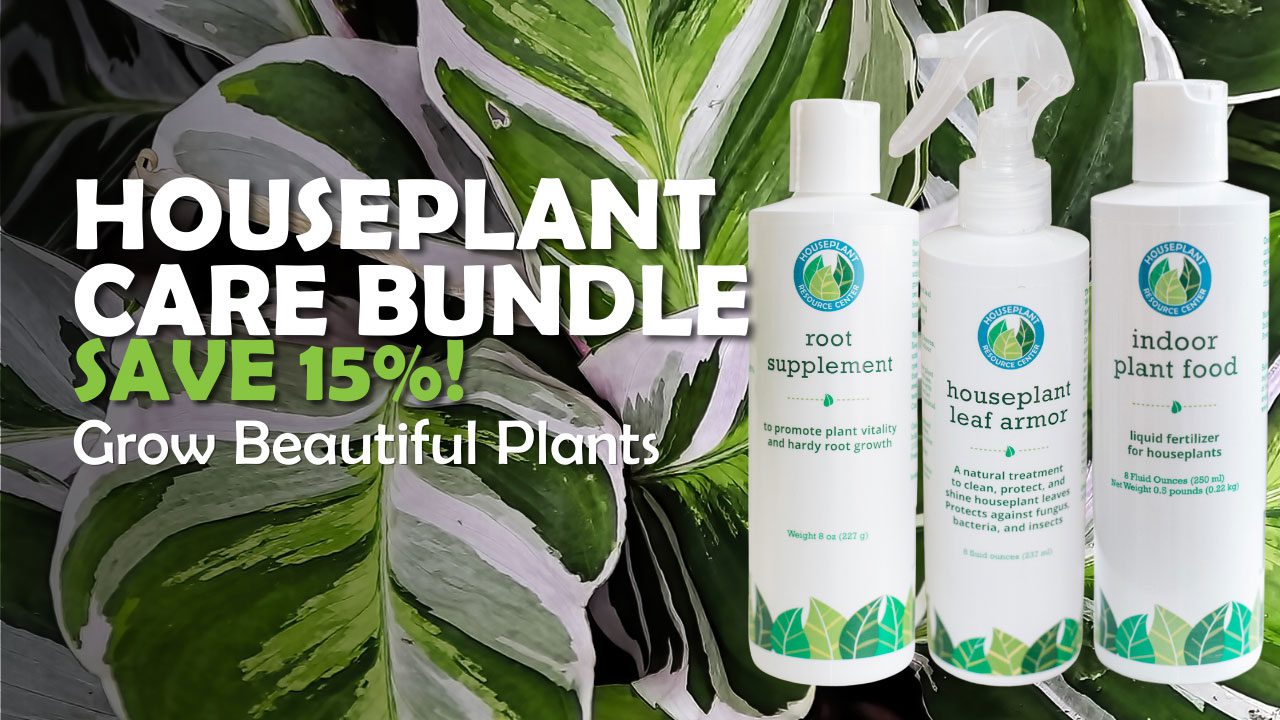In this article, we’ll go over the reasons why you should clean and shine plant leaves and the best methods for doing it safely, in a way that promotes your plant’s health rather than diminishing it.
The whole reason we have houseplants is because they’re beautiful and they make our homes and offices look good. They also clean the air and provide a whole host of mental benefits, but that’s another article for another day!
It’s frustrating when our plants’ leaves get dusty, dirty, or just plain dull. You might have tried lots of different methods for cleaning and shining your houseplants’ leaves, but some of the common methods you see online are ineffective and even harmful. Cleaning plant leaves with a cloth or water doesn’t always work, chemicals can often burn or otherwise damage leaves, and fats like milk, mayonnaise, or coconut oil can clog a plant’s pores, which interferes with several of its physical functions.
On top of just plain looking bad, dirty leaves can also have a negative impact on a plant’s health! It’s important to keep plant leaves clean for the sake of the plant and to keep your houseplants looking good.
What’s a concerned houseplant parent to do?
Table of Contents
How to Make Leaves Glossy and Shiny?
Advantages of Clean Houseplant Leaves
One of the biggest reasons why you should keep your plant friends’ leaves clean is because dirty, dusty leaves can lead to health problems for your plants.
Plant leaves actually have pores on them, a lot like your skin. Plants also use their leaves to make energy from sunlight, and a lot of a plant’s respiration occurs through the leaves (though a fair bit of it also occurs in the roots and soil!).
Dust and debris on the leaves can actually clog the pores on the plant’s leaves, which can interfere with photosynthesis and respiration. This means that dirty leaves can actually cause your plant to starve and suffocate at the same time.
Not good!
Aesthetics aside, clean plant leaves are crucial for plant health. Shiny leaves also just look better, and it’s okay to want gorgeous, shiny plant leaves! Large-leafed plants like fiddle leaf figs look absolutely stunning when their leaves are nice and glossy.
Now that you know why clean leaves are important, let’s talk about how to get clean, shiny leaves without harming your plant.
Household Products for Cleaning Plant Leaves
All it takes is a quick Google search to find tons of different ways to clean and shine your houseplants’ leaves, but which of those methods and products actually work? Which effectively clean and shine your leaves for the long term instead of harming them over time?
Let’s talk about some of the most common recommendations, whether they work, and how they could help or hurt your plants!
Coconut Oil to Clean Plant Leaves?
This is a popular one, especially for cleaning fiddle leaf fig leaves!
Does it work? Yes. Coconut oil will definitely give you shiny plant leaves—at least for a while.
Does it cause problems for your plant? Possibly.
While one application of a little coconut oil probably won’t hurt your plant (we get it, sometimes you need to shine up your plant to show off to guests!), it’s not something you want to use over and over for the long term.
For one thing, coconut oil definitely sits on the leaves and essentially creates a glossy veneer rather than actually cleaning the leaves. And since it sits on the leaves, it will cause dust and debris to stick to the leaves rather than allowing it to slip off. This might make dusting and cleaning the leaves more difficult, especially if you allow dirt to build up over time.
And dust mixed with a rich fat like coconut oil will create gunk that sits on the leaves and clogs those pores right up. And you know what that means: your plant will have more difficulty breathing and making energy from sunlight.
Overall, we don’t recommend coconut oil as a long-term solution for clean and shiny leaves. It could be okay if you are really diligent about wiping down your plant’s leaves every few days so the dust never has a chance to build up, but really, who has time for that?
Olive Oil to Shine Plant Leaves?
This is another one you’ll see often on plant forums and sites.
Will olive oil make your leaves shiny? It sure will.
Will it harm your leaves? Over time, yes.
Olive oil can cause a lot of the same problems as coconut oil, and for the same reasons. It forms a temporary, shiny layer on the leaves’ surface that ultimately attracts dust and debris, which can build up and get into the pores on the leaves.
Is Baby Oil Safe for Plant Leaves?
While baby oil is sometimes used in DIY pesticides and can be okay for temporary use to ward off household insects, we don’t recommend it for cleaning and shining plant leaves.
While it’s not as rich as coconut oil or olive oil, baby oil is still greasy and can clog leaf pores like any fatty, oily substance.
There are better ways to clean plant leaves than applying sticky fats that will ultimately lead to harmful buildup!
Milk to Clean Plant Leaves?
Milk is often recommended for cleaning and shining plant leaves for a lot of the same reasons you’ll see people recommending various oils. The fat contained in milk (unless you’re using skim) contains fat, which can settle on leaves and make them look shiny temporarily.
But milk does actually contain some vitamins and minerals that can be beneficial to plant leaves. The small dose of calcium can actually be healthy for the leaves, and the protein in dairy milk can help break up debris or residue on the leaves.
Mixing skim milk with water in a 50/50 blend can be an effective cleanser for leaves, and can provide some nutritional benefits as well.
Should you use it? It’s worth a shot!
Cleaning Plant Leaves With Vinegar
Is vinegar safe to use on your plant?
This one is risky. Yes, vinegar, when heavily diluted in water, can be effective in breaking up residue and mineral deposits on your leaves. But this method can also cause chemical burns and discoloration, especially to plants with thinner, softer, more delicate leaves.
A teaspoon of vinegar mixed in a gallon of water (or a half teaspoon in a half gallon) can effectively clean your leaves in a pinch, but there are easier, safer, and more effective ways to clean your plant’s leaves!
Lemon Juice and Water to Clean Plant Leaves
Lemon juice is also commonly recommended, much like vinegar. And it carries many of the same risks.
Yes, lemon juice mixed in water (about half a lemon squeezed into a pint of water) can get residue and buildup off your leaves, but even heavily diluted, the acids in the lemon juice can still have negative effects.
Not the best option.
Soap and Water to Clean Plant Leaves
This is one recommendation we can fully endorse! A gentle solution of mild soap and water is actually very effective for cleaning plant leaves.
Here’s what to do:
First, spray down your plant’s leaves with distilled water and let it sit for about 5 minutes to allow any dust or buildup to loosen.
Then add a teaspoon of detergent-free soap like Dr. Bronner’s pure organic castile soap to a half gallon of distilled water. Soak a microfiber cloth in the soap and water solution, then gently wipe down both sides of each leaf. Don’t scrub hard or use your nails to scratch or scrape the leaves; this can remove the top layer of the leaf, which can later cause the leaf to dry out.
Once you’ve wiped all the leaves, rinse your plant in the shower or with a hose. You might want to tilt your plant to the side so the soapy water will run off instead of going right into the soil. (But don’t worry if some gets into the potting mix.) Do this every couple of months to keep your leaves clean and healthy!
Can I Use Baby Wipes on My Plant Leaves?
This one is tricky. Yes, baby wipes are soft, which is a good thing, and baby wipes can be gentle.
However, not all wipes are created equal and you never really know what you’re getting. Baby wipes can contain chemicals that might be fine for skin, but not the best for plants. We think it’s best to avoid using baby wipes on plants because they really aren’t meant for plant leaves.
Again, not the worst option, but definitely not the best.
You have options!
Advantages of Using Leaf Shine | Clean and Shine Plant Leaves
We’ve experienced a lot of trial and error when it comes to cleaning and shining houseplant leaves. We’ve tried all the recommendations, all the hacks, all the tricks. So far our favorite is good old water with a little gentle soap mixed in. This definitely gets leaves clean, and it’s very safe!
While soap and water definitely gets leaves clean, it doesn’t always make them shiny, especially if they’ve been dirty for a long time.
We’ve found that the best way to make plant leaves shine is to actually nourish the leaves from the inside out with proper light, watering, and fertilizer, and to keep them consistently clean. It also helps to nourish them from the outside to protect them from dust and debris that can cause dullness in the first place.
That’s why we created Leaf Shine: to not only clean leaves, but to protect them from dust, insects, fungus, bacteria, and debris while also providing a nutritional boost!
Leaf Shine comes as an easy-to-use spray that’s ready to go right out of the bottle. All you have to do is spray down the leaves, let it sit for a moment, and wipe the leaves down with a soft cloth, and you’ve got clean, shiny leaves!
If you want an even easier solution, Leaf Shine is also available as convenient wipes! (This is way better than using baby wipes on your plant leaves!) These wipes are perfect for cleaning your plant in between more thorough cleanings, and great if your plant’s leaves just need a little more gentle scrubbing. These wipes won’t scratch your leaves and will help you remove buildup and get dust and dirt out of those little nooks and crannies.
Cleaning your plant leaves couldn’t be easier!
Does Leaf Shine Harm Plants?
No, Leaf Shine will not harm your plants.
We know it’s scary to use a new product on your houseplant leaves, even if the product is specifically made for houseplants. Products vary greatly, and so many factors go into how a plant will react to a substance. Overall health, light exposure, type of plant, age of plant, and more can affect how a plant will handle having something new applied to its leaves.
We worked and tested lots of different ingredients to find the safest and most effective (and side-effect free!) formula for cleaning and shining houseplant leaves.
Leaf Shine, both the spray and the wipes, is made up of all-natural ingredients such as yucca and glycerol that won’t burn or otherwise harm your plant, and will also nourish and protect them.
Cleaning houseplant leaves is part of keeping plants beautiful and healthy. Make sure this becomes part of your regular houseplant care routine! Leaf Shine can help you streamline this process and keep your plant clean and shine between more thorough washes.





